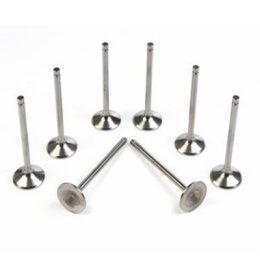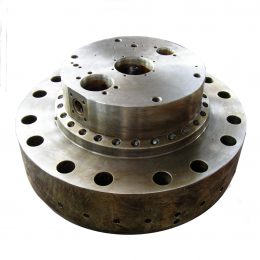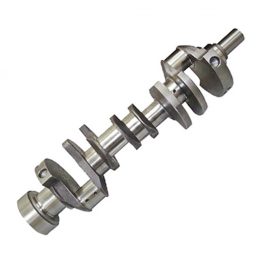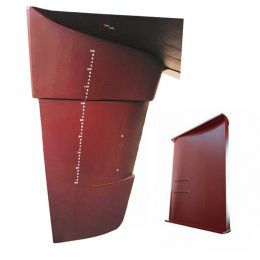Reinventing the Heart of Diesel Engines: The Cylinder Liner
Reinventing the Heart of Diesel Engines: The Cylinder Liner
Diesel engines have been powering vehicles, machinery, and equipment for over a century, thanks to their robustness, reliability, and fuel efficiency. However, as the world moves towards cleaner and greener technologies, diesel engines face a critical challenge: reducing their emissions of harmful pollutants, such as nitrogen oxides and particulate matter. To meet these demands, engineers and scientists are focusing on improving the heart of diesel engines: the cylinder liner.
The Evolution of Cylinder Liner Materials: From Cast Iron to High-tech Alternatives
The cylinder liner is a crucial component of a diesel engine, serving as the inner wall of the combustion chamber where fuel is ignited and burned. Traditionally, cylinder liners were made of cast iron, a durable and cost-effective material. However, as engines became more powerful and efficient, cast iron liners reached their limits in terms of weight, heat dissipation, and wear resistance. In recent years, manufacturers have explored new materials and manufacturing methods for cylinder liners, such as aluminum alloys, steel composites, and ceramic coatings.
The Benefits of Reinventing the Cylinder Liner: Efficiency, Durability, and Emissions
The next-generation cylinder liners offer several advantages over their predecessors. For instance, they can reduce the weight and size of engines, leading to better fuel economy and lower emissions. They can also withstand higher temperatures and pressures, increasing the durability and longevity of engines. Moreover, they can provide smoother and quieter operation, improving the comfort and safety of drivers and passengers. Finally, they can support the use of alternative fuels, such as biodiesel and hydrogen, which require different combustion characteristics and lubrication.
The Challenges of Developing a Next-Generation Cylinder Liner: Engineering and Manufacturing
However, reinventing the cylinder liner is not an easy task, as it requires a multidisciplinary approach that combines materials science, mechanics, thermo-fluids, and manufacturing. Engineers must design liners that can meet the stringent requirements of modern engines, such as high thermal conductivity, low friction, and chemical resistance. They must also optimize the geometries and surface finishes of liners to minimize the formation of soot, deposits, and corrosion. On the manufacturing side, they must develop processes that can produce liners with high precision, repeatability, and cost-effectiveness, while minimizing waste and environmental impact.
Case Studies: Success Stories of Companies that Reinvented the Cylinder Liner
Despite these challenges, some companies have already made significant progress in developing and commercializing next-generation cylinder liners. For instance, Federal-Mogul Powertrain has developed a patented aluminum-silicon-copper composite liner that can reduce engine weight by up to 20% and emissions by up to 10%. Mahle has introduced a new steel piston with a high-strength chromium coating that can improve fuel efficiency by up to 5%. Tenneco has partnered with a ceramics manufacturer to create a nano-composite coating that can increase wear resistance by up to 50%.
The Future of Diesel Engines: The Role of Cylinder Liner Technology in Meeting New Regulations and Market Demands
As the world transitions to low-carbon and electrified transportation, the role of diesel engines may change, but they are expected to remain relevant in some applications, such as heavy-duty trucks, generators, and ships. Therefore, the development of next-generation cylinder liners will continue to play a critical role in improving the efficiency, durability, and environmental performance of diesel engines. Moreover, the cylinder liner technology can also benefit other types of engines, such as gasoline, natural gas, and hybrid. Ultimately, the reinvention of the heart of diesel engines can contribute to a more sustainable and diverse mobility ecosystem.
Reinventing the Cylinder Liner: A Crucial Step towards Cleaner and Smarter Engines
The cylinder liner may seem like a small and overlooked component of a diesel engine, but it is actually a critical element that affects the performance, economy, and emissions of the engine. By reinventing the cylinder liner, engineers and scientists can unlock new opportunities for improving the heart of diesel engines and meeting the challenges of the 21st century. Whether it is through new materials, innovative designs, or advanced manufacturing methods, the next-generation cylinder liners have the potential to transform the way we think about diesel engines and their role in a sustainable future.
- The Importance of Marine Engine Connecting Rods in Performance Engines
- Marine Cylinder Liner Standards: A Technical Overview
- 7 Quality Parts of Marine Engine Crankshaft
- 5 Indications of Urgent Diesel Crankshaft Repair
- Marine Diesel Engine Piston: Components and Materials
- B&W L35MC, L42MC, L50MC, L60MC, L70MC, L80MC Cylinder liner



